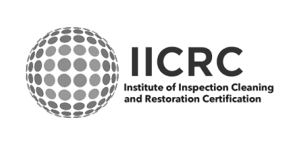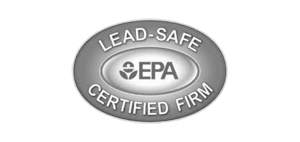Black mold is a type of fungus that can develop in damp and humid environments. It is known to cause respiratory problems, allergic reactions, and other health issues if left untreated. Therefore, it is crucial to follow a comprehensive protocol for black mold removal to protect your health and property.
In this section, you will learn about the necessary steps involved in removing black mold from your home. From identifying black mold to creating a containment plan, we will provide you with a complete guide to ensure safe and effective removal.
Key Takeaways
- Black mold can cause several health problems if left untreated.
- The protocol for black mold removal involves several steps, including identifying the mold, assessing the extent of the infestation, creating a containment plan, and safely removing the mold.
- Proper cleaning and disinfection after removing the mold can prevent future mold growth.
- It is essential to prioritize safety during the mold removal process.
- Consulting professionals may be necessary in severe cases of mold infestation.
Identifying Black Mold
Before you can begin the black mold removal process, you must be able to identify black mold in your home. While some types of mold are harmless, black mold can pose serious health risks if left untreated.
Here are some signs to look out for when identifying black mold:
| Signs of Black Mold | Not Signs of Black Mold |
|---|---|
|
|
It’s important to note that not all signs of black mold are visible. In some cases, black mold may be growing behind walls or under flooring. If you suspect black mold is present in your home, it’s best to have a professional mold inspection conducted.
Assessing the Extent of Infestation
Identifying the presence of black mold in your home is just the first step. After you’ve found it, the next crucial step is assessing the extent of the infestation. This is important because it helps determine the scope of the problem and guides your next steps in the black mold removal process.
To assess the extent of the infestation, it is recommended that you conduct a mold inspection. You can hire a professional mold inspector or perform the inspection yourself if you feel confident. During the inspection, you should examine all areas where you suspect black mold growth, including hidden spaces like the attic and crawl spaces.
| Signs of Black Mold Infestation | Not Signs of Black Mold Infestation |
|---|---|
| Visible black or dark green spots on walls, floors, or ceilings | A musty odor (not necessarily an indicator of black mold) |
| Discoloration or staining on walls, floors, or ceilings | Moisture or water stains (could indicate a mold-friendly environment, but not necessarily black mold) |
| Peeling, bubbling, or cracking paint or wallpaper | Condensation (could indicate a mold-friendly environment, but not necessarily black mold) |
It’s important to note that not all molds are black mold and that not all mold infestations require professional removal. If the infestation is small and contained, you may be able to remove it yourself. However, if the inspection reveals that the infestation is widespread, it’s best to call in professionals to handle the removal.
By assessing the extent of the infestation, you can determine the most appropriate actions to take in the black mold removal process. Remember, identifying black mold early and taking quick, decisive action is key to protecting your home and ensuring the health and safety of you and your family.
Creating a Containment Plan
When it comes to black mold removal, creating a containment plan is crucial to prevent the mold from spreading to other areas of your home. By isolating the affected area, you can limit the potential damage and reduce the risk of exposure to harmful spores.
The first step in creating a containment plan is to identify the boundaries of the contaminated area. This can be done by conducting a visual inspection and using testing methods to determine the extent of the infestation. Once you have determined the boundaries, you can begin to seal off the area. Common methods for sealing off the affected space include:
- Using plastic sheeting to cover doors, windows, and vents
- Applying painter’s tape or duct tape to seal cracks and gaps
- Creating negative air pressure by using an exhaust fan to blow air out of the contaminated area
It is also recommended to use protective barriers, such as disposable clothing and shoe covers, to prevent the spread of spores. These barriers should be disposed of properly after each use.
Removing Black Mold Safely
When it comes to safely removing black mold, there are several precautions and safety measures you should take to minimize any health risks. It is crucial to prioritize safety throughout the removal process to protect yourself and others from potential harm.
Firstly, it is important to wear the proper protective gear to minimize exposure to black mold spores. This includes gloves, goggles, and a respirator mask. The mask should be fitted with a HEPA filter to ensure the capture of small airborne particles.
Before beginning the removal process, make sure to also properly ventilate the affected area by opening windows and doors or using a fan or dehumidifier. This will help prevent the spread of mold spores to other areas of your home.
When removing black mold from surfaces, it is best to use a solution of water and detergent or a specialized mold cleaner. Avoid using bleach, as it can actually stimulate the growth of mold and is not effective in removing it.
If the affected area is particularly large or difficult to access, it may be necessary to consult a professional mold remediation service to ensure safe and effective removal. They have the necessary equipment and expertise to handle the situation and minimize any potential risks.
Overall, taking the proper precautions and safety measures when removing black mold is of utmost importance. By wearing the appropriate protective gear and using effective cleaning methods, you can safely eliminate black mold from your home and protect your health and well-being.
Cleaning and Disinfecting the Affected Area
Now that you have physically removed black mold from your home, it’s time to clean and disinfect the affected area to ensure complete eradication. Mold spores can linger even after visible mold is removed, so it’s crucial to take this step seriously to prevent future growth.
Here are the steps to effectively clean and disinfect the affected area:
- Wear Protective Gear: Just as you did during the removal process, make sure to wear protective gear such as gloves, goggles, and a face mask to minimize your exposure to mold spores.
- Ventilate the Area: Open windows and doors and use fans to improve air circulation and ventilation in the area you’re cleaning.
- Dampen the Area: Dampen the affected area to prevent the spread of mold spores during cleaning.
- Use Effective Cleaning Solutions: To clean black mold effectively, use a solution of water and detergent or a commercial mold cleaner. Take care to follow the instructions on the cleaning product and avoid mixing chemicals.
- Scrub the Area: Use a scrub brush or sponge to clean the affected area thoroughly. Be sure to get into any cracks or crevices as mold can grow in these areas.
- Rinse: After scrubbing the area, use a damp cloth to rinse the surface clean of any remaining cleaning solution.
- Disinfect: To effectively disinfect the affected area, use a solution of water and bleach (one cup of bleach per gallon of water) or a commercial disinfectant. Apply the solution and let it sit for 10-15 minutes before rinsing with water.
- Dry: Allow the area to dry completely. Use a dehumidifier and fans to speed up the process if necessary.
Remember to dispose of any cleaning materials, rags, or sponges that may have come into contact with mold in a sealed plastic bag to prevent the spread of mold spores.
Conclusion
Congratulations! You have now gained a comprehensive understanding of the protocol for safe and effective black mold removal. By identifying black mold, assessing the extent of the infestation, creating a containment plan, safely removing the mold, and thoroughly cleaning and disinfecting the affected area, you can effectively eliminate black mold from your home.
Remember, protecting your health and safety should always be a top priority during the black mold removal process. Be sure to wear proper protective gear and consult with professionals if needed. By following the steps outlined in this article, you can ensure a clean and healthy environment for you and your family.
FAQ
What are the common signs of black mold?
Common signs of black mold include a strong, musty odor, the presence of dark, black or greenish-black patches on walls or ceilings, and the development of respiratory symptoms such as coughing, sneezing, and watery eyes.
How can I differentiate black mold from other types of mold?
Black mold can be differentiated from other types of mold by its dark coloration and slimy texture. It often appears as black or greenish-black patches and can be accompanied by a distinct musty odor.
Why is it important to assess the extent of a black mold infestation?
Assessing the extent of a black mold infestation helps determine the severity of the problem and the necessary steps for removal. It allows you to understand the scope of the infestation and develop an appropriate plan of action.
How do I create a containment plan for black mold?
To create a containment plan for black mold, you should seal off the affected area using plastic sheets or tarps. It is also important to use protective barriers, such as tape, to prevent the spread of mold spores to other parts of your home.
What precautions should I take when removing black mold?
When removing black mold, it is important to wear protective gear, including gloves, goggles, and a respirator mask, to minimize exposure to mold spores. Additionally, ensure that the area is well-ventilated and avoid direct contact with the mold.
How should I clean and disinfect the affected area after removing black mold?
After physically removing black mold, you should clean the area using a solution of water and detergent. Then, apply a recommended disinfectant, such as bleach or hydrogen peroxide, to eliminate any remaining mold spores and prevent future growth.









